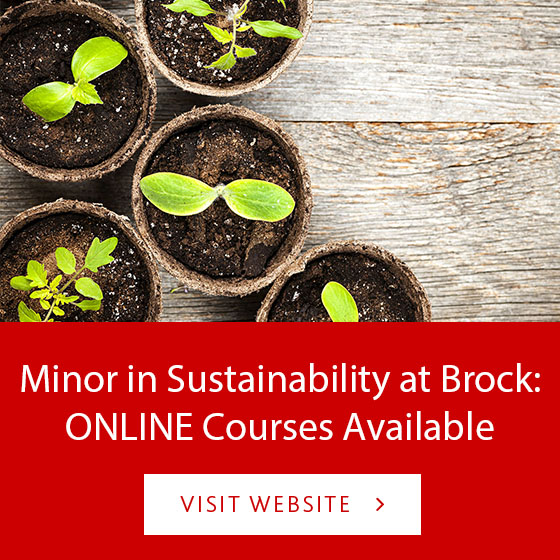Blog Contributors: Kaitlin James & Shelby McFadden

Did you know that the most waste on campus comes from Schmon Tower? The area otherwise referred to as “Tower” produces almost double the amount of waste as the area ranked second in waste contributions on campus.
This is something to think about when you’re eating your meals in Market. A way to help reduce this is by using the conveyor belt system in Market properly. In fact, many Brock students don’t know how this system works, and as a result do not use it.
Did you ever notice that there are no garbage bins in Market? This is because all “garbage” products are to be placed on the conveyor belt. The only items to not be placed on the belt are plastic recyclables, or containers that can be recycled in the blue bins which are located adjacent to the conveyor belt.
This means all leftover food, napkins, and paper products can be left on your plate and placed on the conveyor belt without having to think about what bin to place them in. These products are then sorted properly in the back, with food and paper waste being put through a pulper, before being sent to be composted. The pulper reduces ten bags of garbage down to one, reducing the amount of waste Brock is sending to landfills, and reducing the frequency of waste pick-ups.
Brock’s current Master of Sustainability students recently toured the kitchens in Market and got to see the sorting operations and pulper in action, to better understand the current sustainability initiatives taking place at Brock.
“It’s really cool to see such a simple but effective process being utilized to reduce waste, especially considering that organics represent the largest category within Brock’s waste stream. That being said, the system only works if people use it properly, and it seems like there’s a lot of students, staff, and faculty who are unaware of the proper process,” reflected Shelby McFadden, one of the students on the tour.
So next time you’re in Market, dispose of your waste using the system that is meant to divert items from going to the landfill, which will help increase our diversion rate from 67% to even higher!
This system is meant to ensure proper sorting of all products into their appropriate streams; landfill, compost and recyclables. Be conscious of this and read the signs in place to help you dispose of your products properly!
